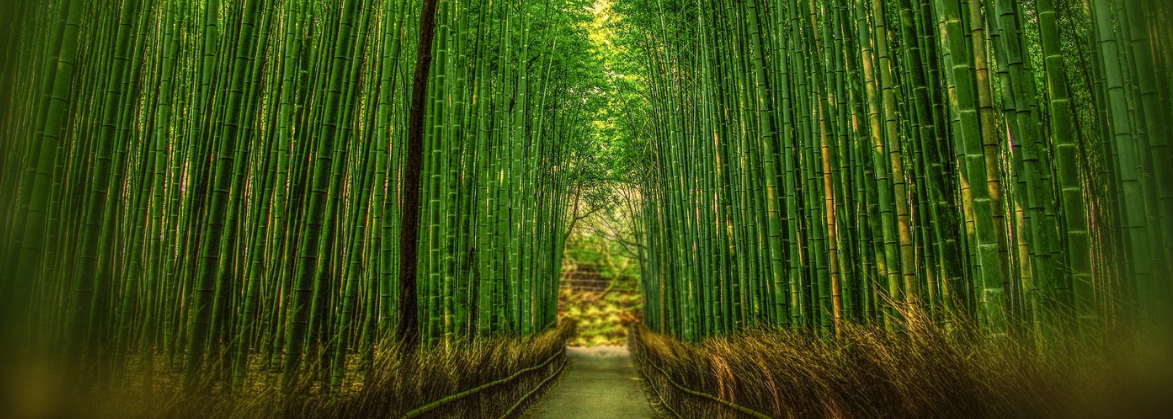In the quest for sustainable packaging solutions, bamboo stands out not only for its ecological benefits but also for its remarkable growth rate. Bamboo can absorb up to 12 tonnes of carbon dioxide per hectare per year and produces up to 35% more oxygen than an equivalent stand of trees, making it a significant carbon sink. As one of the fastest-growing plants on the planet, some species of bamboo can grow up to 91 cm (35 in) within a 24-hour period. This rapid growth cycle, coupled with its minimal need for pesticides and the ability to regenerate from its own roots, positions bamboo as an exceptionally renewable resource. Unlike traditional wood sources that can take decades to mature, bamboo’s readiness for harvest within just three to five years after planting. This article delves into the viability of bamboo fiber-based packaging as a compostable or biodegradable option after use, exploring its potential to revolutionize the packaging industry while addressing both its advantages and the challenges it faces.
Compostability of Bamboo Fiber Packaging
The shift towards sustainable packaging solutions has spotlighted the compostability and biodegradability of bamboo fiber packaging. Bamboo, with its robust and sustainable credentials, emerges as an exemplary candidate in this arena. Its inherent biodegradability signifies that, under the right conditions, bamboo packaging can break down into natural elements within a compost environment, leaving minimal environmental footprint.
Industrial composting facilities, which are designed to optimize the decomposition process, play a crucial role in unlocking the full environmental benefits of bamboo packaging. These facilities maintain controlled environments, ensuring optimal temperatures, moisture levels, and aeration. Such conditions are ideal for bamboo, allowing it to decompose efficiently and contribute to nutrient-rich compost. This rapid breakdown in industrial settings highlights bamboo’s compatibility with circular economy principles, emphasizing its role in reducing waste and replenishing natural systems.
The suitability of bamboo for efficient composting in industrial settings underscores its potential as a sustainable packaging solution. By focusing on improving the accessibility and capacity of industrial composting, societies can enhance the end-of-life sustainability of bamboo products. Furthermore, advancements in processing technologies may further reduce the time required for bamboo packaging to decompose, even in less controlled environments.
Bamboo Cultivation – New Regions vs. Traditional Regions
Historical Significance and Traditional Regions
Historically, bamboo has played a crucial role in Asian cultures, economies, and environments. Indigenous to regions like China, India, and Southeast Asia, bamboo has been utilized for everything from construction and textiles to food and medicine. For example, China, which is home to the largest bamboo forests, manages over 6 million hectares of bamboo, contributing to both the economy and the environment. In these traditional regions, bamboo cultivation has been refined over millennia, integrated into the local ecosystems in a way that supports biodiversity and does not deplete natural resources. The extensive root systems of bamboo help prevent soil erosion, improve water retention, and sequester carbon, contributing to the health of the planet.
Expansion into New Regions
In recent years, the versatility and sustainability of bamboo have sparked interest beyond its native lands. Countries in Latin America, Africa, and even parts of Europe have started to cultivate bamboo on a larger scale. This expansion is driven by bamboo’s potential as a fast-growing, renewable resource that can thrive in a variety of climates and soils. In Latin America, for example, countries like Colombia and Ecuador are exploring bamboo as a tool for reforestation and economic development. In Africa, nations such as Ethiopia and Kenya are investing in bamboo to combat desertification and provide new sources of income for rural communities. These initiatives have seen the incorporation of thousands of hectares into bamboo cultivation, aiming to combat desertification and support economic growth.
This geographical diversification of bamboo cultivation is not just expanding its use in global markets but also testing its adaptability and resilience in new environmental contexts. The introduction of bamboo into these new regions comes with a set of sustainability considerations, including the need for responsible cultivation practices that prevent invasive growth and protect local biodiversity.
Environmental Impacts and Sustainability of Cultivation in New Regions
The cultivation of bamboo in new regions presents both opportunities and challenges. On one hand, bamboo’s rapid growth and low demand for water and fertilizers make it a sustainable choice for reforestation projects and eco-friendly agriculture. It offers a renewable resource that can be harvested repeatedly, reducing pressure on forests and other natural resources.
On the other hand, the introduction of any non-native species requires careful management to ensure that it does not become invasive or disrupt local ecosystems. Sustainable bamboo cultivation in new regions involves implementing practices such as selecting appropriate species, controlling expansion, and ensuring that bamboo plantations complement rather than compete with local flora and fauna.
Moreover, the expansion of bamboo cultivation to new regions highlights the importance of community engagement and socio-economic benefits. Sustainable bamboo industries can provide livelihoods, enhance food security, and support rural development, but this requires inclusive practices that ensure fair benefits for local communities and workers.
As bamboo cultivation takes root in new regions around the world, its role in sustainable development becomes increasingly significant. By balancing environmental stewardship with socio-economic development, the global community can harness the full potential of bamboo as a material for the future, contributing to a more sustainable and resilient planet.
Advancements in Bamboo Packaging
The transformation of bamboo into packaging material is a complex process that showcases the plant’s versatility and sustainability. After harvesting, bamboo undergoes a treatment process to remove any natural pests and prepare it for fiber extraction. The fibers are then processed, often through mechanical or chemical means, to create a pulp that can be molded into various forms and structures. This process allows for a wide range of packaging designs, from simple containers to complex, form-fitting shapes designed for specific products.
Innovations in bamboo packaging technology have led to improvements in the material’s durability and usability. For example, the tensile strength of certain types of bamboo can reach up to 28,000 per square inch compared to 23,000 for steel. For instance, the advances in molding and pressing techniques have enhanced the strength and resilience of bamboo packaging, making it suitable for a broader range of applications, from food containers to electronics packaging. Furthermore, the discovery and application of the ‘bamboo Kun’ component — a natural substance within bamboo that provides antibacterial and antifungal properties — have added a unique selling point for bamboo packaging. These natural properties ensure that products stored within bamboo packaging are protected against microbial growth, potentially extending shelf life and maintaining product quality.
Sustainable Manufacturing and Global Impact
The manufacturing process of bamboo packaging plays a crucial role in determining its overall environmental impact. The production of bamboo packaging uses up to 1/3 less water than the production of paper packaging. Sustainable manufacturing practices focus on reducing water and energy consumption, minimizing chemical use, and optimizing resource efficiency throughout the production process. For example, closed-loop systems can be implemented to recycle water and recover energy, reducing the environmental footprint of bamboo packaging production.
Moreover, the global impact of bamboo packaging extends beyond the manufacturing process to consider the entire supply chain, from raw material sourcing to end-of-life disposal. Sourcing bamboo from sustainably managed forests ensures the protection of biodiversity and prevents overharvesting. Additionally, the end-of-life options for bamboo packaging, including compostability and recyclability, contribute to its positive environmental impact by reducing waste and supporting circular economy principles.
The advancement of sustainable manufacturing practices, combined with the natural benefits of bamboo, positions bamboo packaging as a key player in the transition towards more sustainable global packaging solutions. By addressing both the production process and the broader supply chain, the bamboo packaging industry can minimize its environmental impact and contribute to a more sustainable and resilient planet.
The Consumer Appeal of Bamboo Packaging
The growing consumer interest in sustainable and eco-friendly products has significantly influenced the market demand for bamboo packaging. As awareness of environmental issues increases, consumers are seeking out products that align with their values, including reducing plastic waste and supporting sustainable resource use. Bamboo packaging meets these demands by offering an attractive, functional, and environmentally responsible alternative to conventional packaging materials.
Bamboo’s natural aesthetics, with its unique texture and color, provide a visually appealing packaging option that can enhance brand perception and appeal to eco-conscious consumers. Additionally, the versatility of bamboo allows for creative and innovative packaging designs, further differentiating products on the shelf. The combination of sustainability credentials, aesthetic appeal, and functional benefits, such as durability and product protection, makes bamboo packaging a compelling choice for both manufacturers and consumers looking to make more responsible environmental choices. Surveys have indicated that up to 55% of consumers are willing to pay more for products with sustainable packaging, and the preference for natural and renewable materials like bamboo is driving market trends.
Conclusion
As we look to the future, bamboo stands tall, a beacon of sustainability that promises to play a significant role in an eco-conscious market. Its acceptance by consumers and industries alike speaks volumes about its potential to help shape a greener, more sustainable future. By embracing the multitude of benefits that bamboo offers, we edge closer to a circular economy that values renewal, waste reduction, and harmonious coexistence with our natural environment.
In summary, bamboo has distinct advantages as a sustainable fiber material choice for packaging, particularly due to its rapid growth rate, ability to regenerate without replanting, lower water and energy use in processing, and faster compostability. However, the most sustainable choice will depend on various factors, including the specific context of the bamboo or wood source, the manufacturing process, and the end-of-life disposal options. It is also worth noting that sustainable forestry practices and certifications like FSC (Forest Stewardship Council) can make virgin wood a more sustainable option than non-certified bamboo sources.
In a world where sustainable solutions are no longer optional but imperative, bamboo packaging presents a path forward, offering a convergence of traditional wisdom and modern innovation that could redefine our approach to consumption and resource use for generations to come.
We would love your feedback!
What do you think as bamboo as an alternative material to wood?
References:
International Network for Bamboo and Rattan (INBAR) – Provides information on bamboo growth and environmental impact.
Forest Stewardship Council (FSC) – Offers insights into sustainable forest management and the impact of harvesting virgin wood.
Journal of Cleaner Production – Academic research that can give details on the water and energy use in bamboo processing.
Environmental Protection Agency (EPA) or equivalent – Governmental resources that provide data on the impact of wood pulp processing and waste management.











